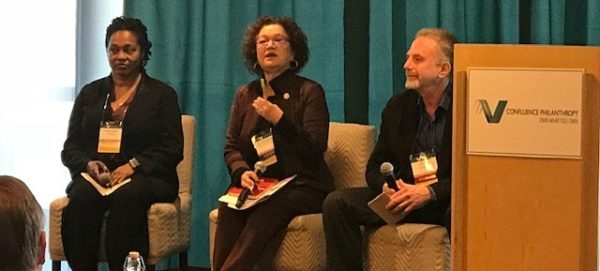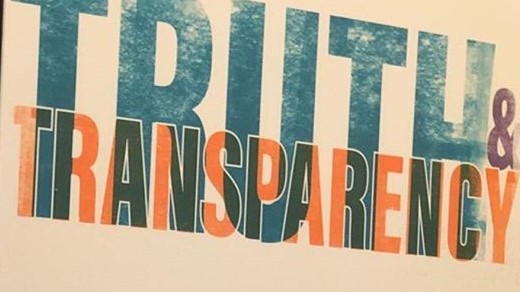
Name an industry that is designed to last forever…
Go ahead, name one. Certainly not retailers. Just ask Sears. Automakers? Weapons manufacturers? Government? Universities? Maybe. But, when one asks the question of philanthropy, we find a sector of our economy that relies on the business model of perpetuity. Not only do foundations establish a business model that is designed to live forever, but they also operate under the misguided conception that the IRS requires it. As if perpetuity isn’t going to tie up enough assets, most foundations strive to maintain purchasing power in perpetuity, meaning that they need to limit current spending, to account for future inflation.
Like an air horn blown by an MTV prankster, this year’s 9th Annual Practitioners’ gathering of the membership of Confluence Philanthropy startled its attendees in many new and relentless ways. Voices boomed from the stage and floor calling us all out, in pursuit of this year’s theme of Truth and Transparency. It was uncomfortable at times to hear explicit calls from invited panelists to go beyond divestment, to go beyond social screens, and to address or attack the wealth hoarding of the perpetuity assumption, the bedrock of our sector.
I sat there, among thoughtful, thought provoked peers who nodded in agreement as Edgar Villanueva and Anand Giridharadas patiently explained how this practice leads philanthropy to advance the status quo and expand the racial wealth divide, rather than close it, as many grantmaking portfolios strive to do. (Actually, Anand described philanthropy as the salad on McDonald’s menu). And, I took pride in a decision that I had nothing to do with, made nearly 25 years ago, when Solidago deliberately addressed this issue by looking to manage a 25-year spend-out, rather than establish a perpetuity model.
In addition to calling out the perpetuity model, other panelists called out philanthropy for the prevailing model of not only hoarding assets in perpetuity but for firewalling off the vast majority (95%) of those assets from the mission. Even though Confluence is the gathering spot for the minority of philanthropies that engage in conversations around the deployment of the investment portfolio, very little of the investment dollars managed by impact investors finds its way to market in strategies that complement and augment grantmaking. Even less money finds its way into strategies that serve low-income people of color in ways community leaders control. Most models, if they reach strategies designed to close the racial wealth divide, still hold all aspects of decision making at the expert level.
Neither money nor power leave the 95% in any substantial way.
At Solidago, we are proud to be part of a new movement, in which impact investment dollars can be directed by community leaders in partnering and crafting new kinds of innovative financial expertise. We’re proud to be part of processes that start with community design and end with community governance over community capital. It’s a reinvestment strategy that goes beyond investment and leads ultimately to the ceding of authority over those assets, in a way that directly addresses the philanthropic hoarding practices Confluence challenged us to examine.
The 9th practitioner gathering was the 9th I have attended as well. I remember well the very first, snowy convening, and the small gathering defining itself. As a board member, I’m proud of Confluence’s decision to host these difficult conversations. I’m glad to sit in a room of change agents inspired to take risks they can afford to take and to sit among colleagues hearing about risks they can no longer avoid.
I enjoyed the wake-up call. As a Chief Financial Officer, I too sit with my risk matrices and jargon-abundant analytics of prevailing market conditions. While every conversation and speaker added their own perspective to the mix, they all shared an understanding that the risk of inaction outweighs the risk of any action we might take today.
At times, being part of philanthropy and being called to action reminds me of The Simpsons’ Cape Feare episode when the Simpsons go into witness protection and Homer repeatedly fails to respond to the FBI agents calling him by his new name, Homer Thompson. Finally, after hours of failed attempts, and being called “Mr. Thompson” in vain yet again, Homer turns to the FBI agent next to him and whispers, “I think he is talking to you.” The conversation at this year’s event was directed at the people in the room. Of that, there is no doubt. The call to action was immediate. The accountability is clear. I’m hopeful that we will soon see actions to support it. I know the speakers were speaking to me.

